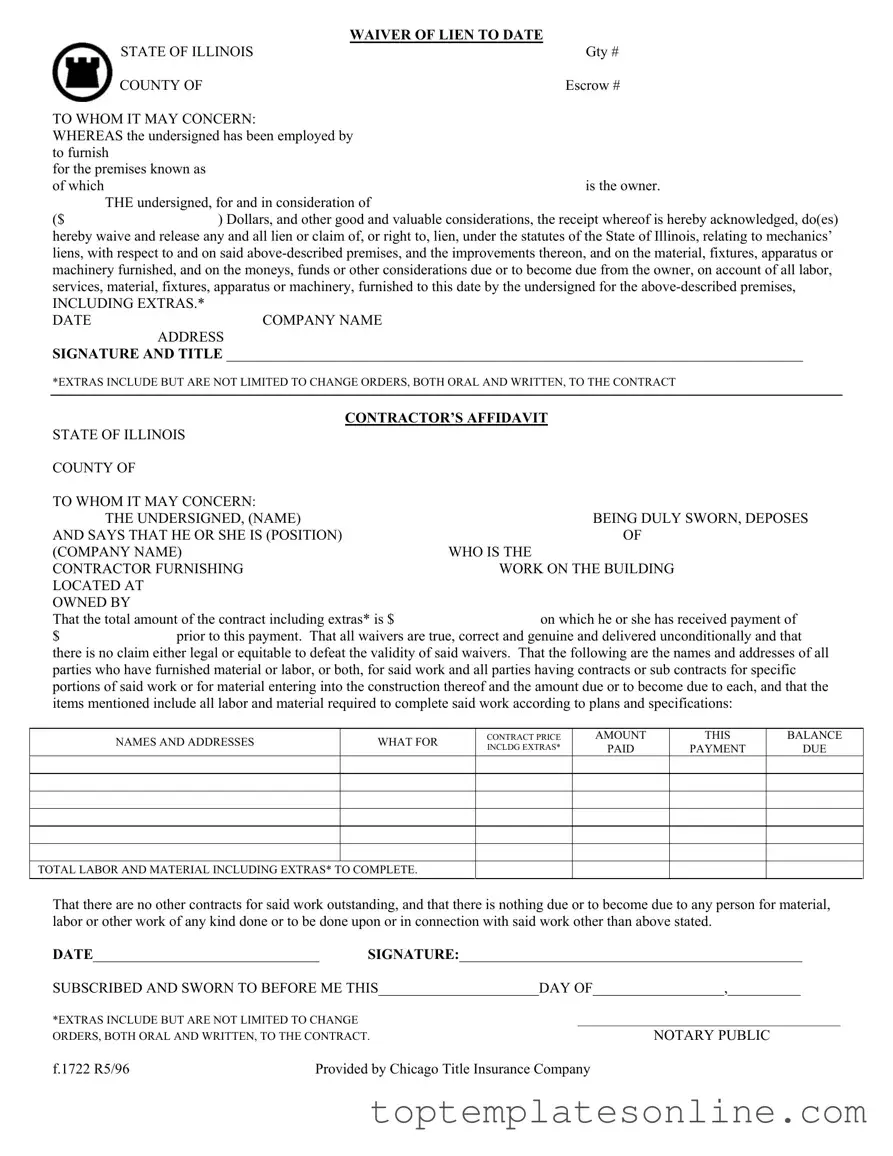The Chicago Title Waiver Format form serves a critical function in the realm of real estate transactions, particularly in Illinois. This document is designed to protect property owners from potential mechanics' liens, which can arise when contractors, subcontractors, or suppliers are not compensated for their services or materials. The form begins with essential identifying information, including the company name, escrow number, and the specific premises involved. It outlines the consideration received by the undersigned, affirming that they waive any claims to a lien on the property for all labor, materials, and services rendered up to the specified date. This waiver is not just a simple acknowledgment; it encompasses all aspects of the project, including extras such as change orders, ensuring that all parties are clear on their financial obligations. Furthermore, the form includes a contractor's affidavit, which provides additional assurance regarding the validity of the waivers and details any outstanding payments or obligations. By signing this document, parties involved in the construction or renovation process can mitigate risks and promote transparency, ultimately fostering a smoother transaction process.
